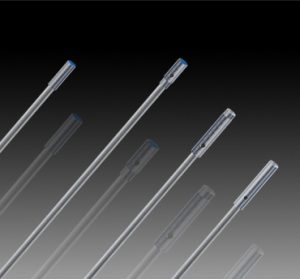For many industries, their machines work under highly demanding environments. That’s why they need sensors that can reliably perform under challenging circumstances. By using ceramic coating, a new range of weld-immune inductive sensors offer to do just that.
What are inductive sensors? 
Inductive sensors are used to detect the presence of a metallic object. Vacuum-sealed to protect the electronics inside, they are resistant to shock, vibrations, moisture, and debris. Simply put, they’re a highly reliable type of sensor that can withstand a variety of conditions and environments. There are different types of inductive sensors offered: high-temp tolerant, washdown, high-pressure tolerant, weld-immune, and miniature, to name a few – so you can choose the sensor that best fits your application.
Weld-immune sensors
Welding metal objects requires extreme temperatures and conditions. Weld-immune sensors are designed specifically for these applications, and recently Contrinex developed an improved version of the weld-immune sensor. Locon is proud to be a long-time licensed distributor for Contrinex, providing supply and support for their full-range of products. The new Contrinex sensor offers increased protection from weld-spatter. Using ceramic-coating, these new sensors are considered weld spatter-resistant. In other words, the non-stick coating prevents weld spatter from accumulating onto a sensor which could make slag removal difficult. The coating material is also impact resistant and immune to magnetic interference. Overall, the ceramic coating increases the service life of the sensor and reduces downtime for the machines involved.
Here at Locon Sensor System, we provide a wide variety of inductive sensors, including those that are weld spatter resistant. To learn more about our weld-immune inductive sensors, or any of the other sensor solutions that we offer, feel free to give us a call at 800-356-2661 or contact us online today.

